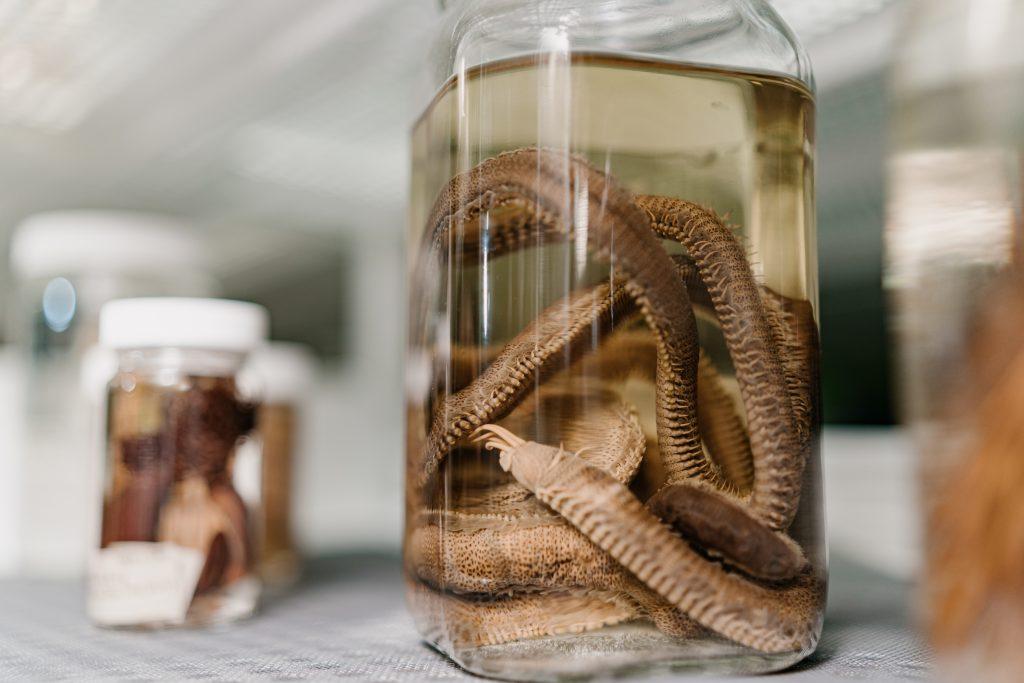Research //

The museum’s worm collection comprises the Annelida, Platyhelminthes, Nemertea, and Nematoda, along with a small number of miscellaneous worm-like invertebrates. One of the smaller collections in the museum, it has over 8,000 specimens, including important type specimens. These have been examined and identified by past experts such as C.C.A. Monro (polychaetes), G.E. Gates (earthworms), and J.P. Moore (leeches), who worked on older material from our collections that were collected mostly from the Malay Peninsula by M.W.F. Tweedie between 1930–1940. A large portion of our worm collections now also comprises more recent material acquired from large-scale surveys in Singapore, most significantly the benthic surveys carried out by the NUS Reef Ecology Study Team for the ‘ASEAN-Australia Living Coastal Resources Project’ in the 1980s–1990s, and the Comprehensive Marine Biodiversity Survey (CMBS) conducted from 2010–2015.
The current focus of our worm collections are the marine polychaetes. These are annelids (segmented worms) that possess bristles also known as “chaetae”, some examples being bristleworms, ragworms, fireworms, and the bobbit worm. Many of these specimens were obtained from local marine surveys such as the Comprehensive Marine Biodiversity Survey (CMBS) and identified by Dr Chris Glasby and Lee Yen-ling. There are currently more than 1,200 catalogued lots from 48 families and the collection is still expanding, with specimens being collected from intertidal surveys conducted throughout the year. In addition to the Polychaeta, our annelid collection also includes Oligochaeta (earthworms), Hirudinea (leeches), Echiura (spoonworms), and the recently incorporated order Sipuncula (peanut worms).
The taxon with the largest representation in our worm collection would be the Platyhelminthes, or flatworms, owing to a recent donation of microscope slides amounting to more than 1,500 monogenean and cestode fish parasites collected by Susan Lim, including over 1,000 types. Our collection of Platyhelminthes also comprises other slides contributed by Richard Arthur, S. Chinabut, and Leong Tak Seng, as well as a small collection of about 150 wet specimens including marine Polycladida and terrestrial Geoplanidae.